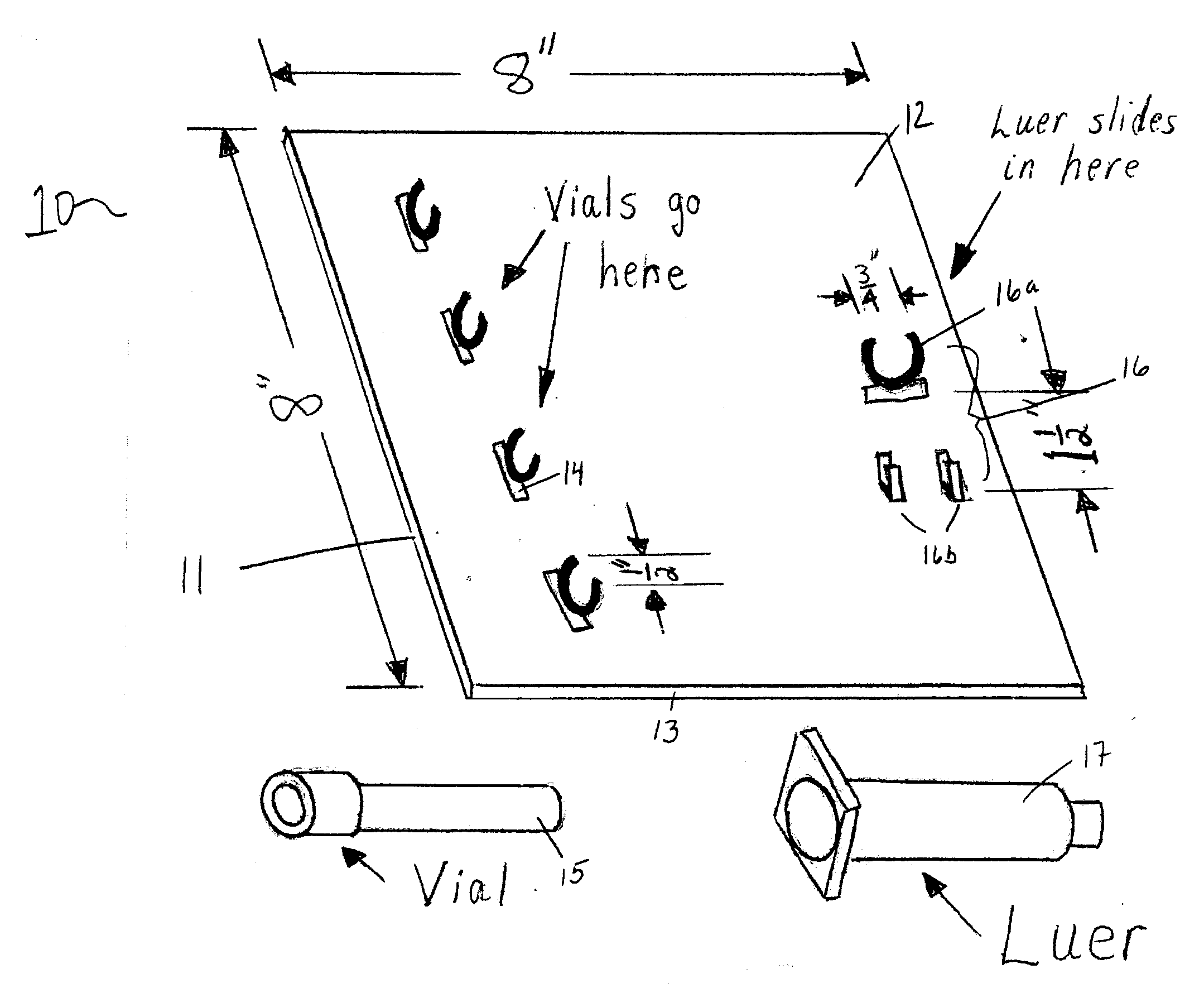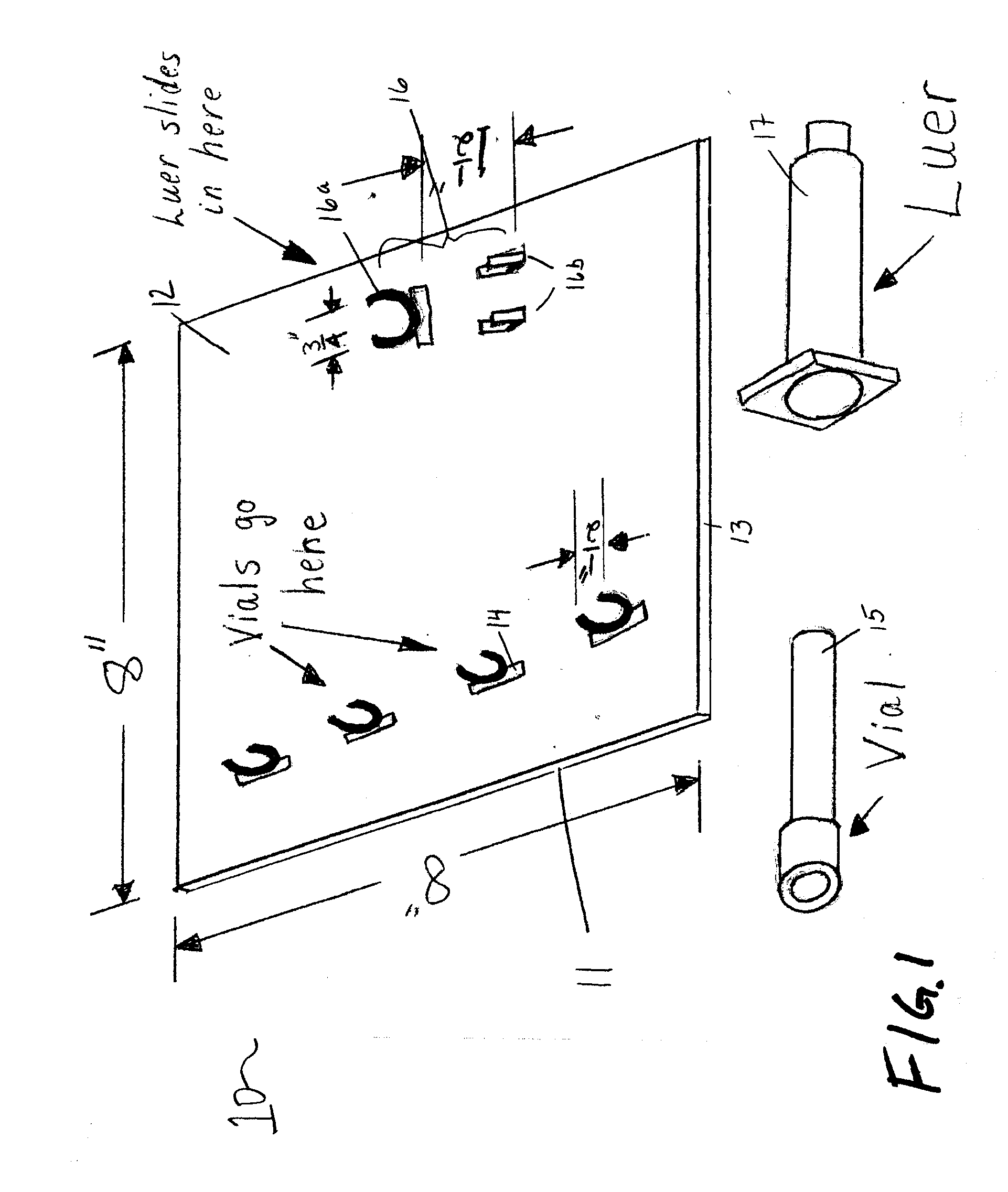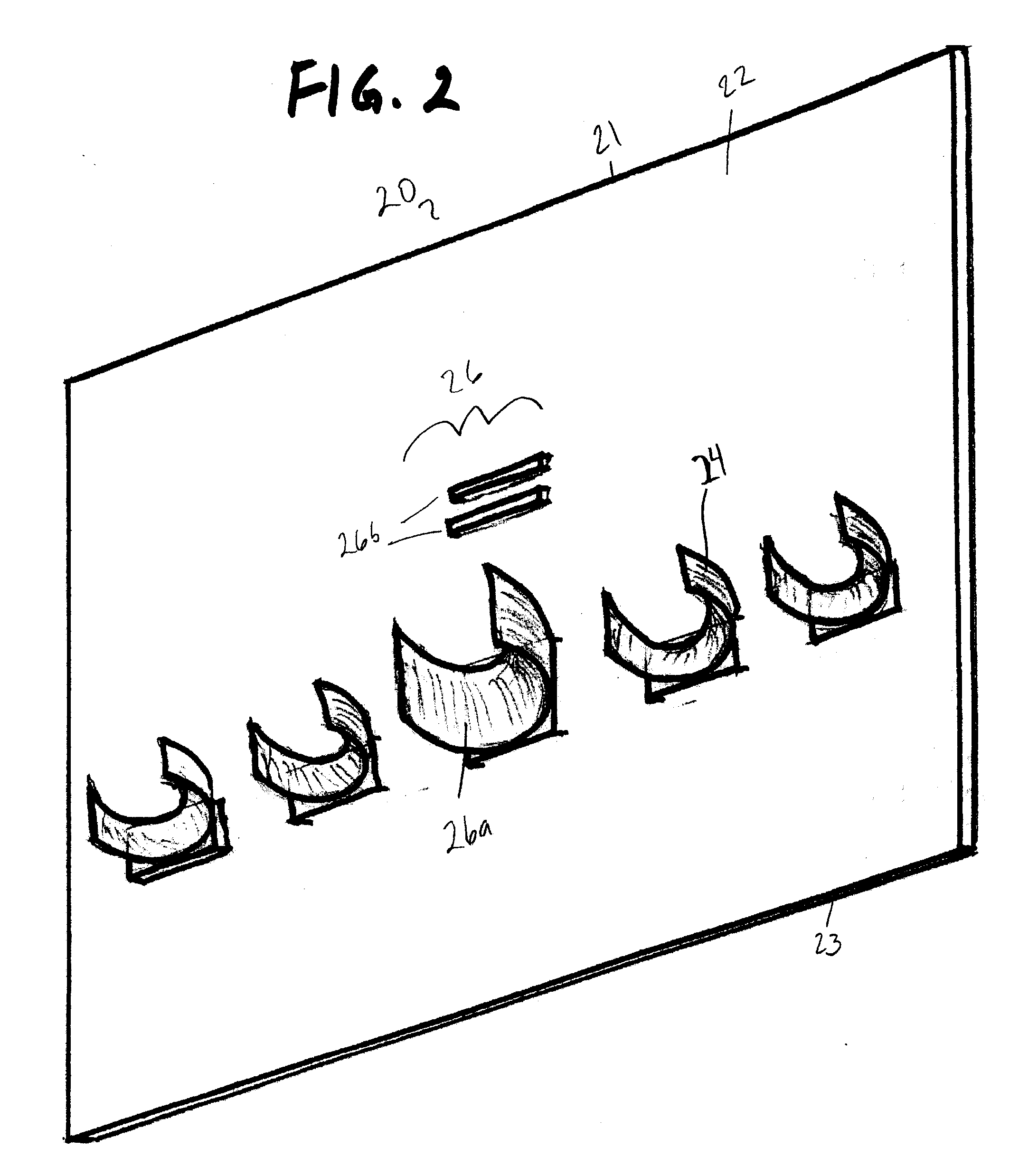Apparatus and method for drawing samples of blood
a blood sample and apparatus technology, applied in the field of health care, can solve the problems that the device, and in particular the base, does not include mechanical or automated elements, and achieves the effects of convenient and organized means, low cost of fabrication and adaptability, and simple design and construction
- Summary
- Abstract
- Description
- Claims
- Application Information
AI Technical Summary
Benefits of technology
Problems solved by technology
Method used
Image
Examples
Embodiment Construction
[0023]Reference will now be made in detail to various exemplary embodiments of the invention, an examples of which are illustrated in the accompanying drawings. It is to be understood that the following detailed description is provided to describe in detail various embodiments of the invention, and is not intended as a limitation of the invention to any one particular embodiment or any particular combination of elements described in two or more specific embodiments.
[0024]In one aspect, the invention provides a device for drawing blood from a patient. In general, the device comprises a base, at least one collection vial holder. In embodiments, the device further comprises at least one luer assembly holder. The device base comprises a top surface, a bottom surface, and four side surfaces. The collection vial holder is connected to the top surface of the device base. Likewise, when present, the luer assembly holder is connected to the top surface of the device base. As a general matter...
PUM
 Login to View More
Login to View More Abstract
Description
Claims
Application Information
 Login to View More
Login to View More - R&D
- Intellectual Property
- Life Sciences
- Materials
- Tech Scout
- Unparalleled Data Quality
- Higher Quality Content
- 60% Fewer Hallucinations
Browse by: Latest US Patents, China's latest patents, Technical Efficacy Thesaurus, Application Domain, Technology Topic, Popular Technical Reports.
© 2025 PatSnap. All rights reserved.Legal|Privacy policy|Modern Slavery Act Transparency Statement|Sitemap|About US| Contact US: help@patsnap.com



